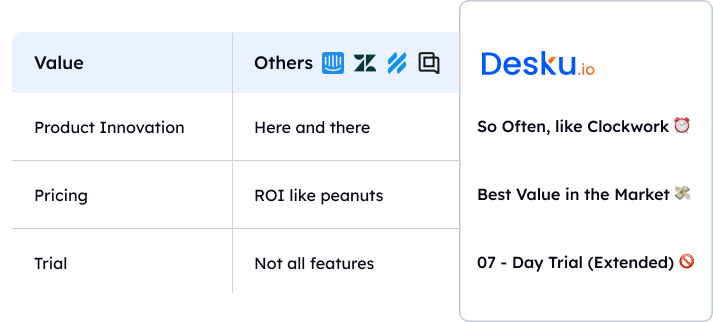Handling your ecommerce inventory can sometimes feel like a tricky juggling act, right? But, don’t sweat it. We’ve got some handy tips coming your way.
These five effective methods can help improve your inventory management game. They’re not just designed to help you keep a healthy stock level, but they can also boost your profits.
And there’s more! These tips can also help you spruce up the shopping experience for your customers. And we all know the magic of satisfied customers for a business.
Ready to take control of your inventory like a seasoned pro? Let’s jump right in.
Key Takeaways
- Adopt Practical Tips for Easier Management: Discover actionable advice to streamline your inventory processes, making your operations smoother and more efficient.
- Implement Five Key Strategies: Learn about five essential strategies that not only help maintain optimal stock levels but can also elevate your profits.
- Enhance Customer Shopping Experience: Understand how effective inventory management plays a crucial role in improving your customers’ shopping journey, leading to increased satisfaction.
- Boost Business with Happy Customers: Recognize the impact of positive customer experiences on your business growth and the potential for higher customer retention.
- Master Inventory Management Like a Pro: Embark on a journey to become proficient in inventory management, ensuring you’re well-equipped to handle your ecommerce business’s demands.
![A Guide On Ecommerce Inventory Management [ 5 Ways To Manage It ] - Desku All in one ai chatbot and automation crm for ecommerce brands](https://b3311357.smushcdn.com/3311357/wp-content/uploads/2024/04/all-in-one-ecommerce-chatbot-and-helpdesk-1024x355.png?lossy=0&strip=1&webp=1)
.
What is Ecommerce Inventory Management?
So, you’re curious about ecommerce inventory management, right? It’s the behind-the-scenes work that keeps your online shop running smoothly. Essentially, it’s all about keeping things organized and making sure you’ve got the right goods, in the right places, at the right times.
It’s like having a well-oiled machine. You’ve got your team that keeps an eye on stock levels, you’ve got software that helps you keep track of everything, and you’ve got strong relationships with suppliers to get your goods delivered efficiently and affordably. Doing this well can really boost your online store’s reputation, keep your customers happy, and help you make smart, cost-effective decisions.
Curious about how it all works? It’s pretty simple, really. It starts when new products arrive at your warehouse. You keep track of these items as they’re sold and sent out to your customers. And when your stock levels start to get low, you reorder.
A reliable system for managing your ecommerce inventory can do wonders for your bottom line. It can help you cut storage costs, avoid having too much stock, and get products to your customers quicker – all of which can improve your financial performance.
Why Ecommerce Inventory Management Important? [Benefits]
- Prevents Stockouts and Overstocking: Ensures optimal inventory levels, reducing the risk of losing sales or incurring unnecessary storage costs.
- Enhances Customer Satisfaction: Guarantees product availability, leading to a reliable and positive shopping experience for customers.
- Improves Cash Flow: Efficient inventory management helps in allocating resources wisely, enhancing the financial health of the business.
- Increases Operational Efficiency: Streamlines warehouse operations, saving time and reducing errors in order fulfillment.
- Boosts Profit Margins: Minimizes holding costs and maximizes sales opportunities, directly impacting the bottom line positively.
- Provides Valuable Insights: Generates data for better forecasting and decision-making, helping in strategic planning for future growth.
- Enhances Supplier Relationships: Enables more accurate and timely ordering, fostering stronger partnerships with suppliers.
Strategies to manage Ecommerce Inventory
Keeping a handle on your ecommerce inventory is super important for the success of your online shop. Some key tactics can help you out. One of these is making sure you always have safety stock on hand. Another helpful strategy is inventory kitting, which is when you group related products.
You should also keep an eye on customer demand and plan your inventory accordingly. It’s a good idea to have a smart storage system in place and to know the best routes for moving your products around. Another useful technique is the ABC inventory method, which helps you prioritize your products based on their value.
1 Safety Stock
If you’re running an online store, setting up a safety stock strategy is an essential part of managing your inventory. You know, safety stock is like a cushion in your inventory count that helps you deal with unexpected demand surges or supply chain hitches. It’s all about reducing the risk of running out of stock.
How do you figure out the best safety stock level? Well, you can take a look back at your past sales data and do some trend analysis. You can even use advanced inventory management software to automate safety stock calculations and manage your stock replenishment. This makes it a whole lot easier to keep an eye on your inventory and keep your stock level right on the money.
Just keep in mind, that managing your online store’s inventory isn’t just about avoiding stockouts. It’s also about not spending too much on holding extra inventory. So, it’s a good idea to work with your suppliers to come up with backup plans for refilling your safety stock during unexpected events.
![A Guide On Ecommerce Inventory Management [ 5 Ways To Manage It ] - Desku All in one ai chatbot and automation crm for ecommerce brands](https://b3311357.smushcdn.com/3311357/wp-content/uploads/2024/04/all-in-one-ecommerce-chatbot-and-helpdesk-1024x355.png?lossy=0&strip=1&webp=1)
2 Inventory Kitting
Inventory kitting can be a real game-changer when it comes to managing your ecommerce inventory. What’s that, you ask? Well, it’s a pretty nifty process where you bundle related products together. And the best part? It’s not only a great way to entice your customers, but it can also ramp up your sales!
But the benefits don’t stop there. It can make your order management a breeze, cut down on those pesky shipping costs, and speed up order fulfilment. And who doesn’t love a bit of efficiency, right?
You see, having an inventory management system in place makes it a cinch to keep track of these kits. It’s all about having your finger on the pulse and knowing exactly where your inventory stands in real time. And let’s not forget, that inventory kitting isn’t just a sales booster. It’s a powerful tool in your arsenal to sharpen your ecommerce inventory management skills.
In the fast-paced world of ecommerce, keeping track of inventory is key. And inventory kitting? Oh, it’s more than just a role-player. It’s a star player in the game. So, why not give this strategy a shot? It could be just what you need to level up your customer experience and make inventory management a breeze.
3 Planning According to Demand
Managing your ecommerce inventory effectively is all about planning according to demand. This approach allows you to anticipate your sales, fine-tune your inventory, and set your pricing strategies based on the ever-changing needs of your customers.
The key to this process is inventory forecasting. By taking a close look at your inventory data, you’ll get a feel for what your customers want to buy. This knowledge helps you predict demand and streamline your supply chain management.
Here are a few pointers for managing your ecommerce inventory:
- Try demand forecasting to anticipate sales and organize your inventory
- Adjust your pricing strategies as demand rises and falls
- Look at your sales data to fine-tune your inventory to match customer demand
- Work closely with your suppliers to ensure flexible production and delivery timelines
![A Guide On Ecommerce Inventory Management [ 5 Ways To Manage It ] - Desku All in one ai chatbot and automation crm for ecommerce brands](https://b3311357.smushcdn.com/3311357/wp-content/uploads/2024/04/all-in-one-ecommerce-chatbot-and-helpdesk-1024x355.png?lossy=0&strip=1&webp=1)
4 Storage and Routing
When it comes to online retail, keeping your inventory in check is a pretty big deal. You need to know where everything is, have it stored correctly, and make sure it’s easy to get to. But managing that all manually can be a total headache, right?
That’s where inventory management tools step in. Think of them like your personal assistant, keeping track of all your stock across different sales channels and giving you a full overview in one place. It’s like having a bird’s eye view of your warehouse, making sure everything is where it should be when it should be.
Some of these tools are super advanced and can automate the whole process for you. And we all know automation is a lifesaver in retail, right? It not only saves you time but also reduces the chance of human error.
These tools also play a huge role in routing your products. They ensure your products reach your customers on time and in a cost-effective manner. That’s the end game in online retail, isn’t it? After all, a happy customer means a successful business!
5 ABC Inventory
Let’s talk about ABC Inventory, shall we? It’s a strategic approach designed to help manage your ecommerce inventory more effectively, which can boost your online retail business’s performance and profit margins.
The ABC inventory method is a flexible and adaptive ecommerce inventory tool that organizes your products into three distinct categories: A, B, and C.
- A-Items: These are your high-value products. They mightn’t sell as frequently, but when they do, they bring in the big bucks.
- B-Items: These are your steady performers. They’re moderately priced items that sell at a consistent pace.
- C-Items: These are your low-cost items. They mightn’t be as flashy as your A-Items, but they sell frequently and keep your business humming along.
Challenges of Inventory Management for Ecommerce Business
- Demand Forecasting Difficulties: Predicting market demand accurately is challenging, leading to potential overstock or stockout situations.
- Complexity in Managing Stock Levels: Keeping the right balance of inventory to meet demand without overstocking is a complex process.
- Warehouse Space Optimization: Efficiently utilizing warehouse space to store inventory without incurring unnecessary costs is often a challenge.
- Handling Multiple Sales Channels: Coordinating inventory across various sales platforms to ensure consistent stock levels can be difficult.
- Supplier Reliability Issues: Dependence on suppliers for timely restocks can lead to challenges if there are delays or quality issues.
- Returns Management: Processing returns and managing restocked items efficiently can complicate inventory management.
- Technology Integration: Implementing and maintaining the right inventory management software to streamline processes requires significant investment and training.
- Data Analysis and Decision Making: Collecting and analyzing inventory data to make informed decisions is complex and time-consuming.
- Global Supply Chain Vulnerabilities: International supply chains can introduce additional risks and challenges, including longer lead times and customs issues.
Ecommerce Inventory Management with the best Software [Top 5 Listed]
Having the right tools can make managing your online store’s inventory a piece of cake. Let’s chat about some of the best software options out there, shall we?
First up, we’ve Shopify, a big name in the ecommerce world.
Then there’s Order NetSuite, which offers a bunch of useful features.
Sumtracker is another good one, known for its user-friendly interface.
Lightspeed Retail is a solid choice for those needing a comprehensive solution.
Last but not least, Cin7 Orderhive, is great for managing multiple sales channels.
Each of these software choices has its unique perks and could simplify your inventory management.
![A Guide On Ecommerce Inventory Management [ 5 Ways To Manage It ] - Desku All in one ai chatbot and automation crm for ecommerce brands](https://b3311357.smushcdn.com/3311357/wp-content/uploads/2024/04/all-in-one-ecommerce-chatbot-and-helpdesk-1024x355.png?lossy=0&strip=1&webp=1)
1 Shopify
Are you on the hunt for the perfect software to handle your ecommerce inventory management? You might want to give Shopify a try. It’s not just about the ease of use or the real-time tracking feature; it’s about the overall package that makes stock management a breeze for online business owners.
So, why is Shopify a standout choice among all ecommerce platforms?
- Live tracking: Shopify offers live inventory tracking, which means you always know what’s in stock.
- Easy-to-use interface: The dashboard is intuitive and easy to navigate, even for those who are new to ecommerce.
- Personalization: With Shopify, you can tailor your inventory management to meet the specific needs of your business.
- Syncing across multiple channels: Shopify ensures your inventory is accurately tracked across all your sales platforms.
In a nutshell, Shopify simplifies inventory management, making it an excellent choice for ecommerce businesses.
2 Order NetSuite
Looking for a way to make your ecommerce inventory management easier and more efficient? You might find exactly what you need in Order NetSuite. It’s got a reputation as one of the top-tier inventory management software solutions out there.
It’s designed to keep track of your inventory across all selling platforms, making it a crucial tool for the smooth operation of any ecommerce business. It keeps you updated on your inventory in real time and comes packed with many useful features.
One of the biggest advantages of Order NetSuite is its automation. It takes care of the heavy lifting, reducing the chances of errors caused by manual data entry. It also keeps your stock levels optimized, which can lead to more profitable operations. With its ability to integrate with various ecommerce platforms, it ensures that your order fulfillment process is smooth and efficient.
Order NetSuite also lets you see your inventory levels at any time. This helps with predicting demand and planning accordingly. By using Order NetSuite, you can maintain a well-balanced inventory, reducing the risk of running out of stock and keeping your customers happy.
3 Sumtracker
If you’re looking for a way to effectively manage your ecommerce inventory, Sumtracker is a solid option. This software stands out for its ability to keep tabs on inventory levels and stock movements in real time. It’s a fantastic tool that’s easy to use and offers some pretty advanced features. Let’s talk about what it can do:
- It simplifies inventory tracking by automating the process. This increases efficiency and saves you a ton of time.
- It provides in-depth reporting and analytics. This means you get all the data you need to make smart business decisions.
- It works well with other ecommerce platforms. This means all your inventory information is in one place, no matter where you sell.
- It has a very intuitive interface, which makes managing different sales channels a breeze.
![A Guide On Ecommerce Inventory Management [ 5 Ways To Manage It ] - Desku All in one ai chatbot and automation crm for ecommerce brands](https://b3311357.smushcdn.com/3311357/wp-content/uploads/2024/04/all-in-one-ecommerce-chatbot-and-helpdesk-1024x355.png?lossy=0&strip=1&webp=1)
Choosing software like Sumtracker can significantly improve your ecommerce inventory management. It frees up your time and resources, allowing you to focus on other aspects of your business.
The best inventory management software is one that suits your business needs and offers features that can help you grow. So, keep that in mind when making your choice.
4 Lightspeed Retails
When it comes to keeping track of your ecommerce inventory, you might want to give Lightspeed Retail’s software a go. This handy tool makes the whole process smooth and automated, helping you save costs and boosting your security measures.
What sets it apart from other similar tools? Well, it’s got a knack for improving your financial performance, which makes it a favourite among users. If you’re running an ecommerce platform like Zoho Inventory, this software could be just what you need for efficient inventory management.
The great thing about Lightspeed is that it helps you meet demand and steer clear of any delays. It does this by keeping a close eye on the movement of goods in and out of your inventory. But it’s not just about keeping things running smoothly – it also aims to make your customers happy, which is always a good thing.
What’s more, it gives you all the info you need to make smart decisions. This means you can keep your stock levels just right, cut down on costs, and increase your profits. Just goes to show that having the right tools can make a world of difference in your ecommerce operations.
5 Cin7 Orderhive
When it comes to managing your online store’s inventory, Cin7 Orderhive is a top-notch choice that many businesses swear by. This software is like the trusty sidekick you didn’t know you needed, helping you keep track of your inventory in an efficient and automated way. With Cin7 Orderhive, you can rest easy knowing that your inventory is in good hands.
This cloud-based software is impressive in its capabilities, offering a smart inventory management system that ensures you have just the right amount of stock, no matter how many sales channels you’re juggling. Wondering what’s in it for you?
Well, here’s the scoop:
- Live updates for pinpoint-accurate inventory tracking
- Coordination of inventory across all your sales platforms
- Automated restocking to prevent those pesky ‘out of stock’ messages
- In-depth analytics to help you make informed decisions
By incorporating inventory software like Cin7 Orderhive into your business, you’ll see a significant improvement in your operations. It’s like having a bird’s eye view of your stock levels at all times.













